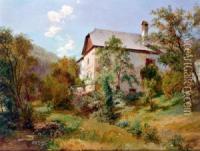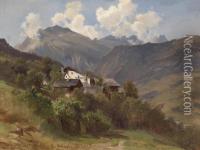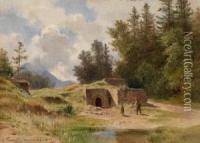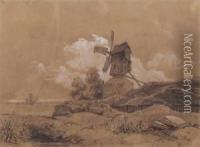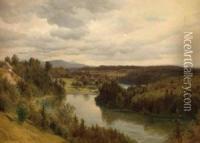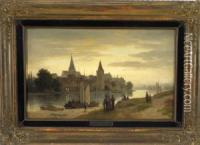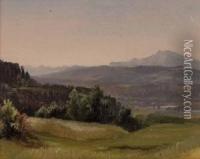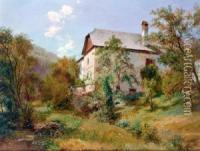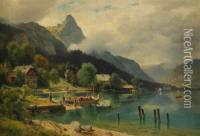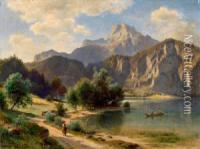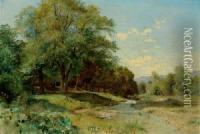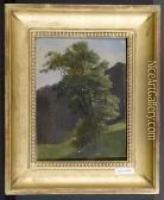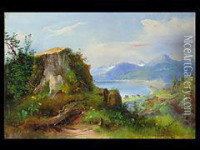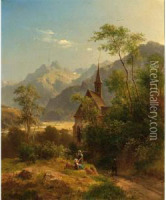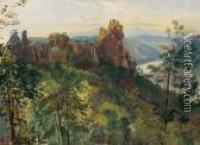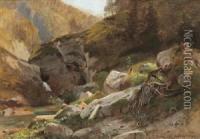Ludwig Halauska Paintings
Ludwig Halauska was an Austrian artist known for his work as a lithographer and painter during the 19th century. Born on August 17, 1827, in Vienna, Halauska showed an early talent in the visual arts. His primary medium was lithography, a printing process that allowed for the mass production of images, which was a relatively new and popular technique during his lifetime.
Halauska received his artistic training at the Academy of Fine Arts Vienna, which was one of the foremost institutions for art education in Europe. He honed his skills under the guidance of prominent teachers and was exposed to the diverse artistic movements of his time. Throughout his career, Halauska was influenced by the Biedermeier style, which was characterized by simplicity, elegance, and a focus on middle-class domestic life. This influence is evident in the clarity and precision of his lithographic works.
In addition to his lithographs, Halauska also engaged in painting, although this aspect of his oeuvre is less well-known. His works often depicted landscapes, cityscapes, and architectural subjects, showcasing his interest in the interplay of light and shadow as well as his attention to detail. His depictions of Vienna and its surroundings contributed to the documentation of the city's appearance during a period of significant change and modernization.
Despite his contributions to the arts, Ludwig Halauska remains a relatively obscure figure in art history. He did not achieve the same level of fame as some of his contemporaries, and his work was largely overshadowed by the more dramatic styles of Romanticism and later, Impressionism, which began to dominate the art world during his lifetime.
Ludwig Halauska passed away on October 14, 1882, in his hometown of Vienna. His legacy lives on through his lithographs and paintings, which continue to be appreciated by connoisseurs of 19th-century Austrian art. They provide valuable insight into the aesthetics and cultural milieu of the Biedermeier period and serve as historical records of urban and rural life in Austria during the mid to late 1800s.
